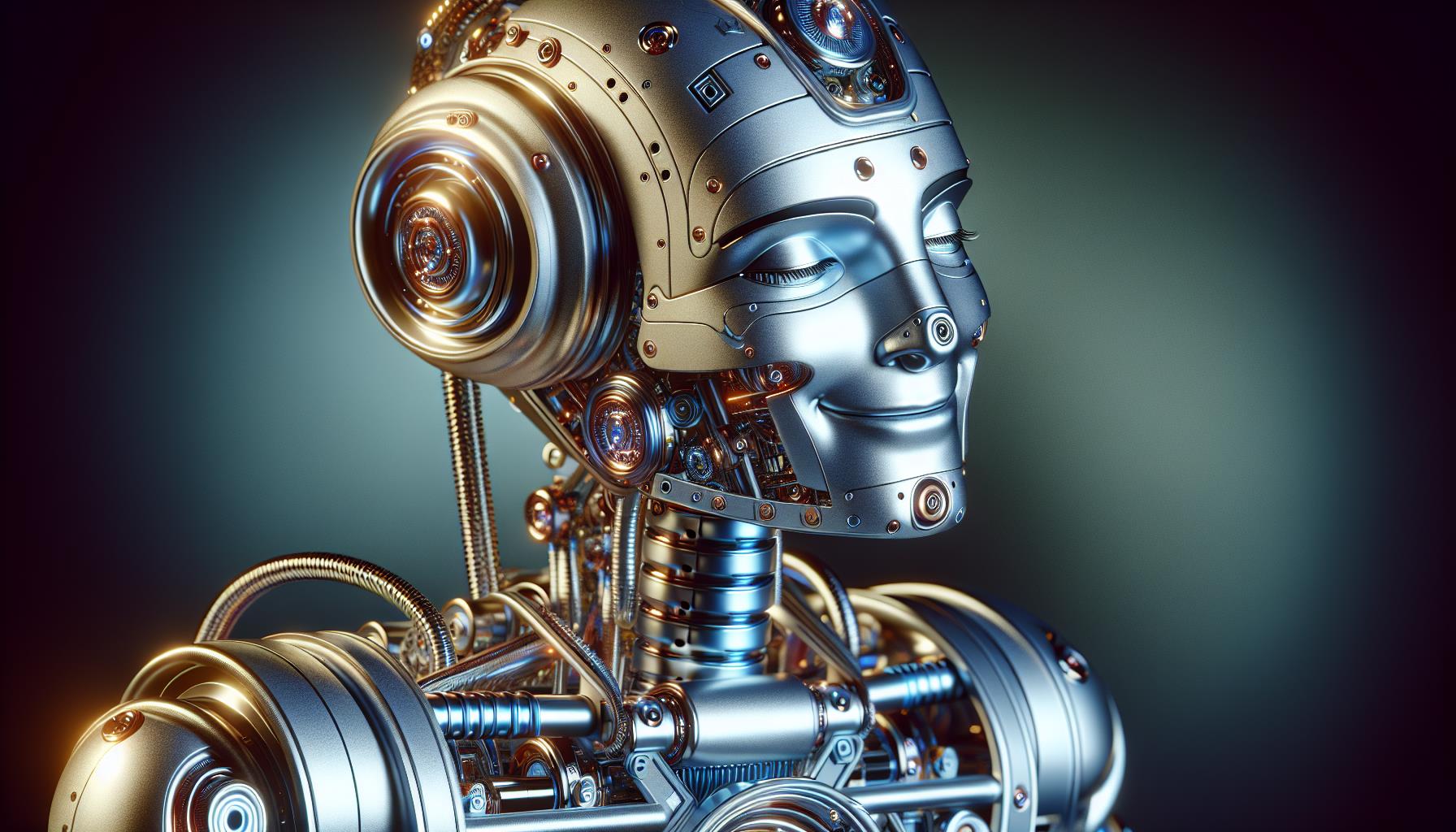The Dawn of Emotional Synchrony in Robotics
In the bustling labs of Columbia Engineering’s Creative Machines Lab, a groundbreaking project has been quietly unfolding over the past five years. The project, named Emo, represents a significant leap forward in the field of robotics, aiming to bridge the emotional gap between humans and machines. Emo is not just any robot; it is a pioneering creation designed to anticipate and mirror human facial expressions, fostering a new level of interaction and empathy between humans and their robotic counterparts.
The development of Emo has been driven by a deep understanding of the nuances of human emotions and the ways in which we express them. By integrating advanced AI algorithms and machine learning techniques, the team at Columbia Engineering has endowed Emo with the ability to recognize and replicate a wide range of facial expressions. This capability allows Emo to engage with humans on a more personal and emotional level, breaking down barriers and opening up new possibilities for human-robot interaction.
Emo’s Technical Marvel
At the heart of Emo’s groundbreaking functionality is a sophisticated AI system equipped with facial recognition technology and predictive modeling. This system enables Emo to not only identify specific facial expressions but also to predict them before they fully manifest. For instance, Emo can anticipate the onset of a smile approximately 840 milliseconds before it occurs, allowing the robot to co-express the smile simultaneously with the human. This remarkable feat of predictive accuracy is a testament to the years of research and development that have gone into making Emo a reality.
The technical prowess of Emo extends beyond mere prediction. The robot’s design incorporates a series of actuators and sensors that work in harmony to mimic facial expressions with astonishing precision. Whether it’s a subtle raise of an eyebrow or a full-fledged smile, Emo can replicate these expressions in real-time, creating a seamless and natural interaction with humans. This level of expressiveness was achieved through meticulous engineering and an iterative design process, ensuring that Emo’s responses feel genuine and lifelike.
The Implications of Emotional Robots
The introduction of Emo into the world of robotics marks a significant milestone in our journey towards creating machines that can understand and respond to human emotions. The ability of robots like Emo to anticipate and share in our emotional experiences opens up a realm of possibilities for their application in various fields. From healthcare and education to customer service and therapy, emotionally intelligent robots could revolutionize the way we interact with technology and each other.
In healthcare, for example, robots equipped with Emo’s capabilities could provide companionship and emotional support to patients, helping to alleviate feelings of loneliness and isolation. In education, these robots could engage with students in a more empathetic and understanding manner, adapting their responses based on the emotional state of the learner. The potential for positive impact is vast, highlighting the importance of continued research and development in this area.
Challenges and Ethical Considerations
While the advancements represented by Emo are undoubtedly exciting, they also raise important questions about the ethical implications of emotionally intelligent robots. As we forge deeper connections with machines, it becomes crucial to consider the boundaries of these relationships and the potential consequences of blurring the line between human and robot. Ensuring that these technologies are developed and used responsibly will be key to maximizing their benefits while minimizing potential risks.
Furthermore, the technical challenges associated with creating emotionally intelligent robots are significant. Achieving a level of emotional synchrony that feels natural and intuitive requires ongoing refinement of AI algorithms and a deep understanding of the complexities of human emotion. The team at Columbia Engineering continues to work on these challenges, pushing the boundaries of what is possible in the realm of robotics.
The Future of Human-Robot Interaction
The development of Emo represents a glimpse into the future of human-robot interaction, a future where machines can understand and respond to our emotions in meaningful ways. As research in this field progresses, we can expect to see more robots like Emo, each with their own unique capabilities and applications. The potential for these technologies to enrich our lives and society is immense, heralding a new era of empathy and understanding between humans and machines.
As we stand on the brink of this exciting frontier, it is clear that the journey of Emo and robots like it is just beginning. The possibilities are endless, and the impact of emotionally intelligent robots on our world promises to be profound. The work being done at Columbia Engineering’s Creative Machines Lab is not just about building robots; it’s about redefining the future of human-machine interaction and opening up a world of possibilities for empathy, connection, and understanding.
The unveiling of Emo by the Creative Machines Lab at Columbia Engineering marks a significant advancement in the field of robotics. By bridging the gap between human emotions and machine understanding, Emo paves the way for a future where robots can offer not just functional assistance but also emotional support and companionship. As we continue to explore the potential of emotionally intelligent robots, the implications for society, ethics, and technology are vast and varied. The journey of Emo is a testament to the power of innovation and the endless possibilities that lie at the intersection of human emotion and artificial intelligence.
